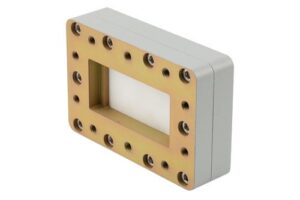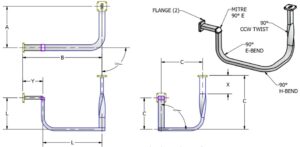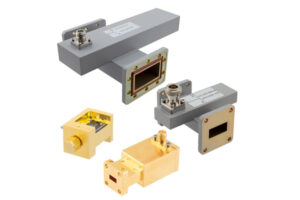Reduced Edge Diffraction
The reduced edge diffraction in corrugated horn antennas improves efficiencies considerably compared to conventional horn antennas. Conventional designs have sharp edges that create diffraction patterns, leading to scattered energy and signal loss. For example, it has been shown that an average conventional horn antenna with a 12 cm aperture may lose around 15-25% in efficiency as a result of edge diffraction. This loss can be translated into poorer gain and higher side lobe levels, adverse in the performance for applications such as radar and communication systems.
On the other hand, corrugated horn antennas have grooves which help them avoid sharp edges that minimize diffraction effects. Indeed, it was observed that the corrugated design can reduce edge diffraction losses by as much as 30%. Efficiency figures of about 85-90% can be supported by, a corrugated horn of comparable aperture size of 12 cm, which is a significant improvement. The shaping of electromagnetic waves more effectively contributes to increasing the gain and highly contributes to beam stability and coherence—something very important for high-frequency applications in satellite communications.
The practical benefits following from reduced edge diffraction are real for applications that demand high precision and reliability. For example, a telecommunications application operating at 28 GHz would realize only 70% efficiency if using a traditional horn antenna. Given this type of performance, higher transmitter power is required. If this were operating with a corrugated horn design, the efficiency would increase to 90%, and operators could reduce transmitter power by roughly 3 dB. With a reduction of power comes an equivalent energy saving, hence reducing operational expenditure—particularly crucial in satellite-based systems.
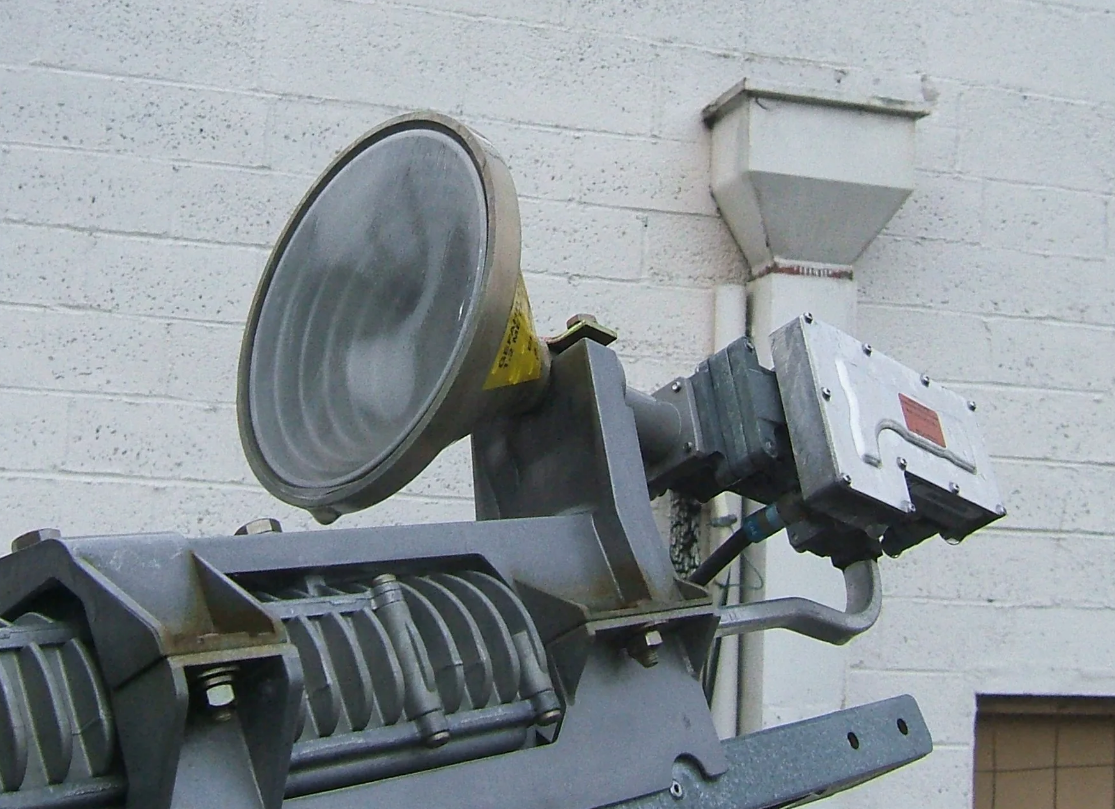
Improved Aperture Field Distribution
Compared to conventional designs, improved aperture field distribution significantly enhances the performance of corrugated horn antennas. Conventionally, the field distribution at the aperture is usually poorly matched in a conventional horn antenna, while the main lobe gain is typically in the region of 10 to 12 dBi and the side lobes as low as -8 to -10 dB. This difference in distribution implies that most of the energy radiated is wasted in side lobes, reducing overall efficiency and leading to weaker signals in the desired direction. For example, due to such a loss, a conventional horn antenna operating at 12 GHz might send out a signal with only 0.1 mW/m² power density at 500 meters distance.
By contrast, corrugated horn antennas are designed to give a more uniform aperture field distribution, since the specific pattern of corrugation allows much finer control of electromagnetic wave propagation. Consequently, it is possible for such antennas to achieve a main lobe gain between 15 and 18 dBi, with the side lobes at -20 dB or lower. That means the beam would be much more focused, increasing the effective radiated power considerably. For instance, a corrugated horn antenna can provide the same power density of 0.25 mW/m² at the same distance of 500 meters for the same frequency of 12 GHz, which is an equivalent gain in signal strength of 150%.
The advantages of better aperture field distribution are not confined to gain. The better the distribution, the better the impedance matching at the feed point. In conventional horn antennas, the reflection losses due to poor impedance matching may reach up to 30% because of an uneven field distribution. On the other hand, if a corrugated horn is well-designed, it can reduce those losses below 5%, thus enabling the radiation of nearly all the input power. In real terms, that means a 100-watt transmitter with a conventional horn may yield an effective 70 watts to the target of interest, whereas up to 95 watts can be delivered from the same transmitter by a corrugated horn.
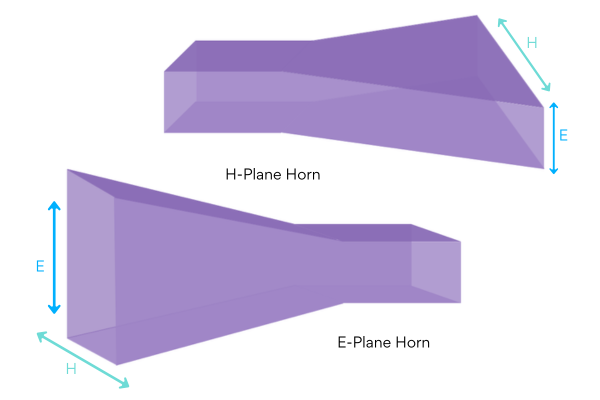
Better Impedance Matching
The fundamental advantage of the corrugated horn antennas over the more conventional design types is that there is better impedance matching, hence greater efficiencies and better overall performances. This is because of an impedance mismatch between the feed and the horn in conventional designs, resulting in a considerable signal reflection. In many of these antennas, the reflection coefficients can be as large as 0.3 or more, corresponding to as much as 30% of the input power being reflected back instead of being transmitted. This means that for a typical horn operating at 10 GHz and driven by a 100-watt transmitter, only about 70 watts are effectively contributing to the radiated signal. Because of this, normally weaker performances may ensue.
Contrastingly, corrugated horn antennas are designed to offer an impedance match in special geometries and surface features. The theoretical studies also depict that antennas can realize a reflection coefficient as low as 0.05, which means that only 5% of the input signal power is reflected back. Such significant reduction allows approximately 95 watts of the same 100-watt input to be radiated effectively. This better power transfer is particularly helpful in applications like satellite communications where effective radiated power is to be maximized to maintain signal integrity over large distances.
This will have better impedance matching with a wide range of practical applications, from radar systems to telecommunications. For instance, a conventional horn operating in a radar system at 18 GHz would experience some reflection losses that would reduce the effective power output and hence its effectiveness in target detection. The use of a corrugated horn ensures that the efficiency in radar systems would be enhanced, making the gain as high as 15 dB with minimal losses. Due to this enhancement, it allows an increase in the target detection capabilities: the system is now able to detect smaller targets at greater ranges than before, which is important for military and aviation applications.
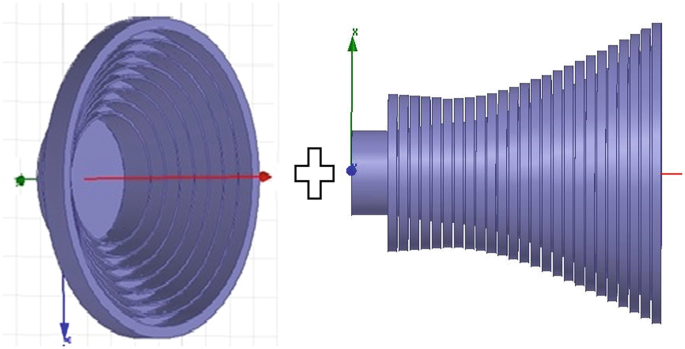
Enhanced Bandwidth
Compared to conventional horn designs, one of the major advantages of corrugated horn antennas is the bandwidth, ranging from a few percent of the center frequency to very high values. In fact, conventional horns usually possess narrow bandwidths. For example, a typical horn antenna designed to operate at 10 GHz may only have a bandwidth of 10-12%, which means it will function efficiently only within the range of 9 to 11 GHz. This was an operational challenge in applications where flexibility was required, since any shift in frequency involved re-designing or replacing the antenna entirely.
On the other hand, the unique structural design of the corrugated horn antenna enables these antennas to achieve bandwidths larger than 30% or even more. For example, a corrugated horn operating at a center frequency of 10 GHz may support efficiency over a range from 7 to 13 GHz. This wide operating range thus provides broad capability for many applications where frequency agility is essential, such as in satellite communications and radar systems. With enhanced bandwidth, operators can easily adapt to various frequency allocations with minimal loss in performance and reduced costs associated with multiple antennas.
Further implications of the enhanced bandwidth relate to the signal quality and performance in communication systems. In practice, a corrugated horn antenna will be able to exhibit consistent gain and reduced signal distortion across its operational bandwidth in a wireless communication system. Such a corrugated horn antenna would have a gain of 15 dBi at 10 GHz and would still exhibit gains of 14 dBi at 8 GHz and 13 dBi at 12 GHz. This predictability in performance ensures that signals remain strong and steadfast, something highly relevant for applications such as mobile communications, where the usage of frequency can change variably.
Low Cross-Polarization Level
The designs have very low levels of cross-polarization, a great advantage over conventional types of horns. Cross-polarization is any unwanted polarization component from the radiation pattern of an antenna, hence interfering with the desired signal and also reducing the overall performance of a system. In conventional horn antennas, the cross-polarization can be as high as -15 dB. The implication is that a significant amount of the radiated energy has a polarization mismatch, and the related loss of effective signal strength can be 30% or higher. For example, in a communication system operating at 5 GHz, this unwanted polarization could prevent a conventional horn from effectively maintaining clear communications and increasing the chances of signal degradation and interference.
In contrast, corrugated horn antennas are designed to minimize cross-polarization effects. By virtue of their geometric configurations, these antennas can achieve cross-polarization levels of -30 dB or better. This means an improvement whereby only 0.1% of the total radiated power is misaligned, and this ensures that the lion’s share of energy is transmitted in the desired polarization. For example, a corrugated horn antenna would have, for the same communication at 5 GHz, a cleaner signal with much less interference, hence improving the general reliability and quality of communication.
The low level of cross-polarization opens perspectives in many practical applications, especially in satellite communications and wireless networks. In satellite systems, many signals share the same frequency band; therefore, reducing cross-polarization becomes an extremely necessary process for clear communications. A very good example would be that in a satellite system, one can have several channels using a corrugated horn antenna with no interference among the other channels. This can increase the capability of a channel by up to 50%, hence using the available bandwidth more effectively and giving far better service to the end-users.
Controlled Phase Front
One of the most important features of corrugated horn antennas is the controlled phase front, which substantially improves the performance compared with conventional designs. The term “phase front” denotes how regular the wavefront is leaving the antenna. In conventional horns, because of geometric irregularities and manufacturing tolerances, there could be distortion in the phase front, resulting in poor quality beams and increased side lobes. For example, a usual conventional horn antenna at 12 GHz would easily allow a phase variation of more than 30 degrees over the aperture. It results in an effective loss of gain, which manifests itself mostly by a decrease in main lobe power up to 10% and ingression of noise into the system.
Contrary to this, corrugated horn antennas are designed precisely to provide a controlled phase front across the entire aperture. These anisotropic corrugation patterns allow a far more uniform phase distribution, typically less than ±5 degrees of variation. With this better control of the phase front, the improved beamforming yields narrower main lobes and lower side lobes. One illustration might be a corrugated horn at 12 GHz, which might then attain a gain of up to 18 dBi, where a standard horn would realize only 15 dBi. This results in an increase in gain, and an increase in gain translates to an increase in signal strength and effective transmission over greater distances.
All of these applications apply the concept of a controlled phase front due to the high degree of precision it offers, especially in radar and satellite communications. In a radar system, this ability to produce a well-defined beam can significantly enhance target detection and tracking. In a typical example, it can increase up to 30% of the detection range from conventional design with a corrugated horn antenna. This means, in practicality, a radar operating at 10 GHz could detect small aircraft or drones from 1,000 meters instead of 700 meters; this adds critical situational awareness in defense and aviation applications.
Reduced Back Reflection
One of the most important advantages of corrugated horns over other conventional types of horn antennas is their reduced back reflection. In electromagnetic waves, this term defines the undesirable return of power toward the feed due to various reasons such as disturbance in the quality of the signal and inefficiency in performance. In conventionally designed horns, the levels of back reflection easily exceed -10 dB, which leads to a consequence where 10 percent of the power reflects backward toward the transmitter. For example, in a standard 5-GHz communication system that normally employs a conventional horn, this reflection can further deteriorate the strength of the signal to such a level that it reduces effective output power transmission and enhances the possibility of signal distortion or loss.
On the other hand, the corrugated horns are designed in a way that the back reflections are minimized on account of optimum geometrical configuration and smooth transitions. Several studies have demonstrated that such antennas can achieve back reflection levels of -20 dB or better, meaning only 1% of the input power is reflected, further helping in improving much efficiency in the transmission of power. For instance, in a system of 5 GHz that uses a corrugated horn, an input of 100 watts may retain almost 99 watts of effective output power. This will be important in applications that require high signal integrity, such as in critical communications and radar systems.
The implications of reduced back reflection go much bigger than questions around efficiency; they spread to the general reliability of the system. For example, in radar systems, high levels of back reflection can trigger false targets or misleading data when it interferes with the signal. As an example, if the back reflection of a radar antenna is high, there is the possibility that the antenna will detect unwanted echoes that may give signals similar to having a target, hence making operation hard. By employing a corrugated horn antenna with reduced back reflection, the detection of the signal by the radar system is clear hence improvement in target identification and tracking capabilities. It has been observed that a radar system with the inclusion of corrugated horns can facilitate up to 25% accuracy in target detection and thus permit more effective monitoring or responding of critical applications.

